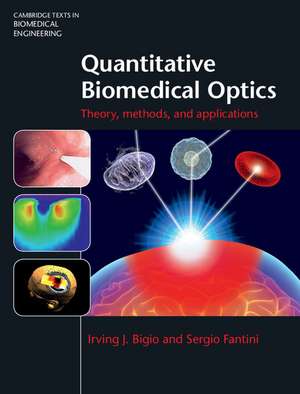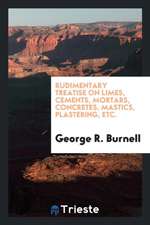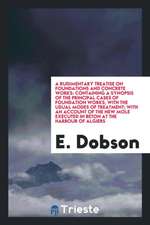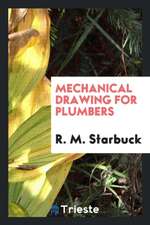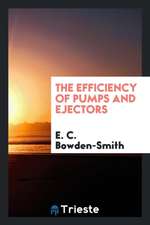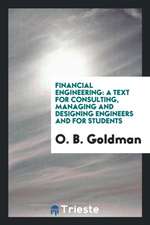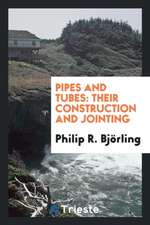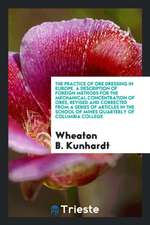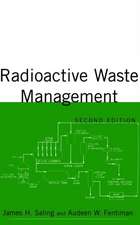Quantitative Biomedical Optics: Theory, Methods, and Applications: Cambridge Texts in Biomedical Engineering
Autor Irving J. Bigio, Sergio Fantinien Limba Engleză Hardback – 6 ian 2016
Din seria Cambridge Texts in Biomedical Engineering
- 5%
 Preț: 397.76 lei
Preț: 397.76 lei - 5%
 Preț: 442.22 lei
Preț: 442.22 lei - 5%
 Preț: 573.97 lei
Preț: 573.97 lei - 5%
 Preț: 409.25 lei
Preț: 409.25 lei - 5%
 Preț: 689.10 lei
Preț: 689.10 lei - 5%
 Preț: 444.06 lei
Preț: 444.06 lei - 5%
 Preț: 522.91 lei
Preț: 522.91 lei - 11%
 Preț: 486.77 lei
Preț: 486.77 lei - 5%
 Preț: 905.93 lei
Preț: 905.93 lei -
 Preț: 441.45 lei
Preț: 441.45 lei - 5%
 Preț: 825.18 lei
Preț: 825.18 lei - 5%
 Preț: 872.98 lei
Preț: 872.98 lei - 5%
 Preț: 841.29 lei
Preț: 841.29 lei - 5%
 Preț: 874.27 lei
Preț: 874.27 lei - 5%
 Preț: 583.21 lei
Preț: 583.21 lei - 5%
 Preț: 845.07 lei
Preț: 845.07 lei - 5%
 Preț: 621.35 lei
Preț: 621.35 lei - 5%
 Preț: 654.54 lei
Preț: 654.54 lei - 5%
 Preț: 484.69 lei
Preț: 484.69 lei - 15%
 Preț: 530.76 lei
Preț: 530.76 lei
Preț: 606.71 lei
Preț vechi: 681.70 lei
-11% Nou
Puncte Express: 910
Preț estimativ în valută:
116.11€ • 126.08$ • 97.53£
116.11€ • 126.08$ • 97.53£
Carte tipărită la comandă
Livrare economică 22 aprilie-06 mai
Preluare comenzi: 021 569.72.76
Specificații
ISBN-13: 9780521876568
ISBN-10: 0521876567
Pagini: 698
Ilustrații: 212 b/w illus. 8 tables
Dimensiuni: 198 x 253 x 36 mm
Greutate: 1.61 kg
Editura: Cambridge University Press
Colecția Cambridge University Press
Seria Cambridge Texts in Biomedical Engineering
Locul publicării:Cambridge, United Kingdom
ISBN-10: 0521876567
Pagini: 698
Ilustrații: 212 b/w illus. 8 tables
Dimensiuni: 198 x 253 x 36 mm
Greutate: 1.61 kg
Editura: Cambridge University Press
Colecția Cambridge University Press
Seria Cambridge Texts in Biomedical Engineering
Locul publicării:Cambridge, United Kingdom
Cuprins
1. Nomenclature; 2. Overview of tissue optical properties; 3. Introduction to biomedical statistics for diagnostic applications; 4. General concepts of tissue spectroscopy and instrumentation; 5. Autofluorescence spectroscopy and reporter fluorescence; 6. Raman and infrared spectroscopy of vibrational modes; 7. Elastic and quasi-elastic scattering from cells and small structures; 8. Diffuse reflectance spectroscopy at small source-detector separations; 9. Transport theory and the diffusion equation; 10. Continuous-wave methods for tissue spectroscopy; 11. Time-domain methods for tissue spectroscopy in the diffusion regime; 12. Frequency-domain methods for tissue spectroscopy in the diffusion regime; 13. Instrumentation and experimental methods for diffuse tissue spectroscopy; 14. Diffuse optical imaging and tomography; 15. In vivo applications of diffuse optical spectroscopy and imaging; 16. Combining light and ultrasound: acousto-optics and opto-acoustics; 17. Modern optical microscopy for biomedical applications; 18. Optical coherence tomography; 19. Optical tweezers and laser-tissue interactions.
Recenzii
'Bigio and Fantini provide a long-needed introduction to the field of biomedical optics and biophotonics, adding spice to the presentation of the basics with historical and etymological gems. The conversational tone of the book is very welcome, and allows room for the clear explanation of subtleties not always clarified in other discussions. The book is a wonderful introduction to the field. It balances rigor with readability. Bravo!' Steven L. Jacques, Oregon Health Sciences University
'This book about biomedical optics provides a remarkably comprehensive introduction to the field. The text is carefully and affectionately developed with quantitative rigor, and it is written in a clear, easy-to-understand style that helps students develop intuition. The subject matter covers basics of linear and nonlinear optical spectroscopy, static and dynamic light scattering and more advanced topics such as light transport through highly scattering tissues, acousto-optics and opto-acoustics, and imaging from microscopy to tomography. The book should prove useful as a textbook for courses targeting both advanced undergraduates and graduate students in science, engineering and medicine. It will also be a valuable reference for researchers working at the frontiers of knowledge.' Arjun G. Yodh, University of Pennsylvania
'Bigio and Fantini's comprehensive text on biomedical optics provides a wonderful blend of accessible theory and practical guidance relevant to the design and application of biomedical optical systems. It should be required reading for all graduate students working in this area.' Rebecca Richards-Kortum, Rice University, Houston
'This textbook provides a broad survey of the field and covers the basics in a remarkably clear and easy to understand style. The authors have used the fundamental principles of physical science to describe subject matter and a quantitative approach for their applications. … I highly recommend this textbook for upper-level undergraduate courses as well as more advanced graduate-level courses on biomedical optics. The book would also be useful for students of the biological sciences and as a reference resource for researchers in biomedical optics.' Reva Garg, Optics and Photonics News
'Educators in Biomedical Optics and Biophotonics have been long awaiting a comprehensive text to accompany their teaching in this rapidly growing field and this is as good as it gets. Educators may have their own bias, but this text provides a balanced approach giving due weight to the topics within the field and covering them comprehensively for most undergraduate and graduate courses in the field … There is sufficient depth, detail and reference material for very specialized researchers to use this as their 'bible' and it should be on the desk of every serious educator and researcher in biomedical optics.' Martin Leahy, National University of Ireland, Galway
'This book about biomedical optics provides a remarkably comprehensive introduction to the field. The text is carefully and affectionately developed with quantitative rigor, and it is written in a clear, easy-to-understand style that helps students develop intuition. The subject matter covers basics of linear and nonlinear optical spectroscopy, static and dynamic light scattering and more advanced topics such as light transport through highly scattering tissues, acousto-optics and opto-acoustics, and imaging from microscopy to tomography. The book should prove useful as a textbook for courses targeting both advanced undergraduates and graduate students in science, engineering and medicine. It will also be a valuable reference for researchers working at the frontiers of knowledge.' Arjun G. Yodh, University of Pennsylvania
'Bigio and Fantini's comprehensive text on biomedical optics provides a wonderful blend of accessible theory and practical guidance relevant to the design and application of biomedical optical systems. It should be required reading for all graduate students working in this area.' Rebecca Richards-Kortum, Rice University, Houston
'This textbook provides a broad survey of the field and covers the basics in a remarkably clear and easy to understand style. The authors have used the fundamental principles of physical science to describe subject matter and a quantitative approach for their applications. … I highly recommend this textbook for upper-level undergraduate courses as well as more advanced graduate-level courses on biomedical optics. The book would also be useful for students of the biological sciences and as a reference resource for researchers in biomedical optics.' Reva Garg, Optics and Photonics News
'Educators in Biomedical Optics and Biophotonics have been long awaiting a comprehensive text to accompany their teaching in this rapidly growing field and this is as good as it gets. Educators may have their own bias, but this text provides a balanced approach giving due weight to the topics within the field and covering them comprehensively for most undergraduate and graduate courses in the field … There is sufficient depth, detail and reference material for very specialized researchers to use this as their 'bible' and it should be on the desk of every serious educator and researcher in biomedical optics.' Martin Leahy, National University of Ireland, Galway
Notă biografică
Descriere
Based on physical science principles, Quantitative Biomedical Optics covers theory, instrumentation, methods and applications, with practical exercises and problem sets.
